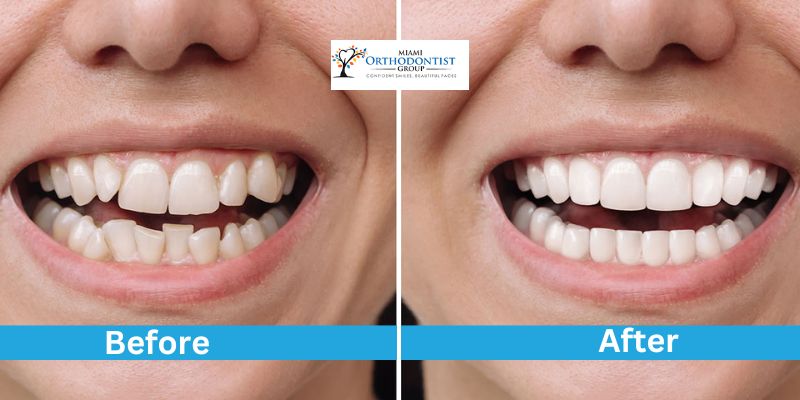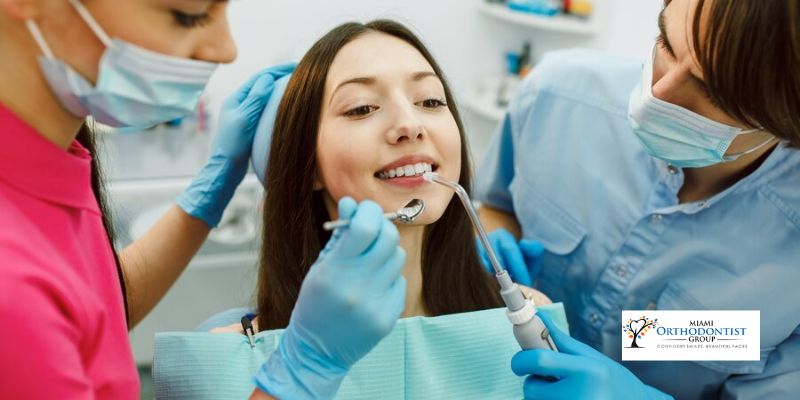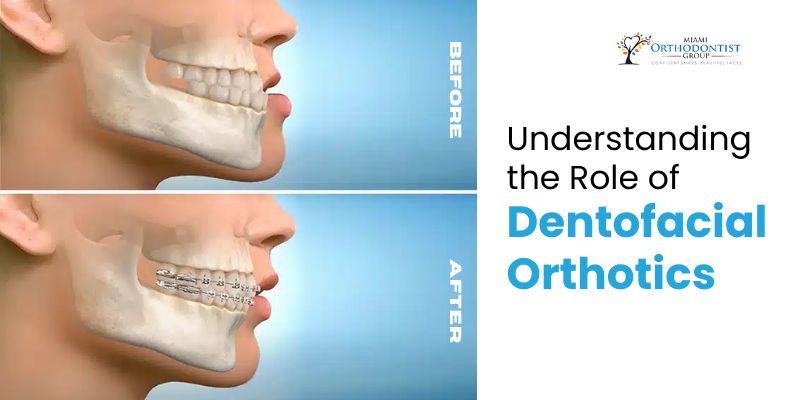Dentofacial orthodontics, commonly known as dentofacial ortho, is crucial in correcting dental and facial misalignments. This specialised branch of dentistry focuses on aligning teeth and jaws to achieve optimal facial aesthetics and functionality. Dentofacial orthodontists are trained to address various issues, including malocclusions, facial asymmetries, and skeletal discrepancies, through various orthodontic techniques and treatments.
Role of Dentofacial Ortho in Correcting Facial and Dental Misalignments
Improving Dental Alignment
One of the primary roles of dentofacial ortho is to correct dental misalignments, also known as malocclusions. Malocclusions can manifest in various forms, such as overcrowding, gaps between teeth, overbites, underbites, and crossbites.
These issues affect the smile’s appearance and can lead to functional problems such as difficulty chewing, speech impediments, and jaw pain. Dentofacial orthodontists employ a combination of braces, clear aligners, and other orthodontic appliances to move teeth into their proper positions gradually. By applying controlled forces to the teeth, orthodontic treatment aims to align the dental arches, close gaps, and create a harmonious bite relationship.
Correcting Facial Imbalances
In addition to addressing dental concerns, dentofacial orthodontics also focuses on correcting facial imbalances and asymmetries. Facial asymmetry can result from jawbones’ size, shape, or position discrepancies, leading to an uneven facial appearance. Dentofacial orthodontists analyse the relationship between the teeth, jaws, and surrounding facial structures to identify underlying skeletal issues contributing to facial asymmetry.
Treatment may involve orthodontic appliances, such as braces or expanders, to gradually guide the growth and development of the jaws into a more harmonious position. In some cases, surgical intervention may be necessary to correct severe skeletal discrepancies and achieve optimal facial balance. By addressing both dental and skeletal components, dentofacial orthodontics aims to improve the appearance, function, and overall well-being of patients.
Enhancing Facial Aesthetics
Dentofacial orthodontics goes beyond just correcting functional issues; it also significantly enhances facial aesthetics. A well-aligned smile and balanced facial proportions contribute to a more attractive appearance and boost self-confidence. Dentofacial orthodontists carefully consider the patient’s facial features and desired aesthetic outcomes when planning orthodontic treatment.
By aligning the teeth and jaws, dentofacial ortho can improve facial symmetry, correct protrusions or retrusions of the lips and chin, and create a more harmonious facial profile. Through advanced treatment techniques and customisation, orthodontists strive to achieve natural-looking results that complement the patient’s unique facial characteristics.
Improving Oral Health and Function
 Beyond the cosmetic benefits, dentofacial orthodontics is crucial in improving oral health and function. Misaligned teeth and jaws can increase the risk of dental problems such as tooth decay, gum disease, and temporomandibular joint (TMJ) disorders. By straightening the teeth and aligning the bite, orthodontic treatment facilitates proper oral hygiene practices, making cleaning between teeth easier and preventing plaque buildup.
Beyond the cosmetic benefits, dentofacial orthodontics is crucial in improving oral health and function. Misaligned teeth and jaws can increase the risk of dental problems such as tooth decay, gum disease, and temporomandibular joint (TMJ) disorders. By straightening the teeth and aligning the bite, orthodontic treatment facilitates proper oral hygiene practices, making cleaning between teeth easier and preventing plaque buildup.
Correcting bite abnormalities can also alleviate strain on the jaw joints and muscles, reducing the likelihood of TMJ pain and dysfunction. Dentofacial orthodontics helps patients enjoy a lifetime of healthy smiles and comfortable chewing by optimising oral health and function.
Providing Long-Term Stability
Another vital aspect of dentofacial orthodontics is ensuring long-term stability following orthodontic treatment. Orthodontic appliances such as braces or aligners gradually move teeth into their desired positions, but maintaining the results requires diligent retention protocols.
Dentofacial orthodontists utilise retention strategies, such as retainers, to prevent teeth from shifting to their original misaligned positions. By incorporating proper retention into the treatment plan, orthodontists help patients maintain their newly achieved dental and facial alignment over the long term, ensuring lasting results and preserving the investment in orthodontic care.
Collaborating with Multidisciplinary Teams
 Dentofacial orthodontics often involves collaboration with other dental specialists and healthcare professionals to address complex cases comprehensively. Patients with severe skeletal discrepancies or craniofacial abnormalities may require interdisciplinary treatment involving orthodontics, oral surgery, and other specialised interventions.
Dentofacial orthodontics often involves collaboration with other dental specialists and healthcare professionals to address complex cases comprehensively. Patients with severe skeletal discrepancies or craniofacial abnormalities may require interdisciplinary treatment involving orthodontics, oral surgery, and other specialised interventions.
Dentofacial orthodontists work closely with oral and maxillofacial surgeons, prosthodontists, periodontists, and other specialists to develop coordinated treatment plans that address all aspects of the patient’s condition. This collaborative approach ensures that patients receive the highest standard of care and achieve optimal outcomes, combining the expertise of multiple disciplines to transform smiles and lives.
Empowering Patients through Education and Support:
Beyond the technical aspects of treatment, dentofacial orthodontics also involves empowering patients through education and support. Orthodontic treatment often requires patient commitment and cooperation, particularly in maintaining oral hygiene, adhering to dietary restrictions, and wearing orthodontic appliances as prescribed. Dentofacial orthodontists educate patients about the importance of compliance with treatment protocols and guide proper care and maintenance throughout the orthodontic journey. Dentofacial orthodontics fosters a sense of ownership and responsibility, empowering patients to take control of their oral health and achieve successful outcomes by equipping them with the knowledge and tools they need to participate actively in their treatment.
Advancing Research and Innovation
Dentofacial orthodontics is a dynamic field that continually evolves through research and innovation. Orthodontic specialists are actively involved in conducting clinical studies, exploring new treatment modalities, and advancing technology to improve the effectiveness and efficiency of orthodontic care.
From digital imaging and computer-aided treatment planning to novel orthodontic materials and techniques, ongoing research drives innovation in dentofacial orthodontics, leading to better treatment outcomes and enhanced patient experiences. Dentofacial orthodontists stay abreast of the latest advancements in the field, integrating evidence-based practices and cutting-edge technology into their treatment approaches to deliver state-of-the-art care.
Conclusion
In conclusion, dentofacial orthodontics encompasses diverse roles and responsibilities to achieve optimal dental and facial alignment, enhance aesthetics, promote oral health and function, provide long-term stability, collaborate with multidisciplinary teams, empower patients through education and support, and advance research and innovation. Dentofacial orthodontists strive to transform smiles, improve quality of life, and shape the future of orthodontic treatment through a comprehensive and holistic approach to patient care.


